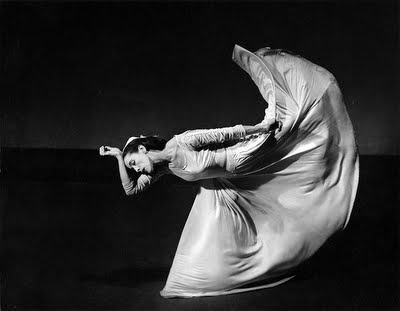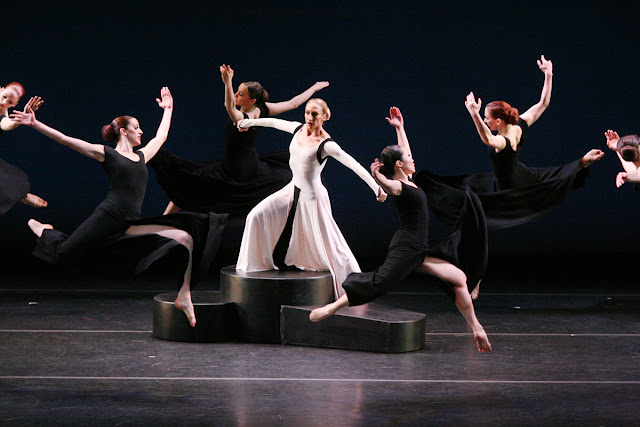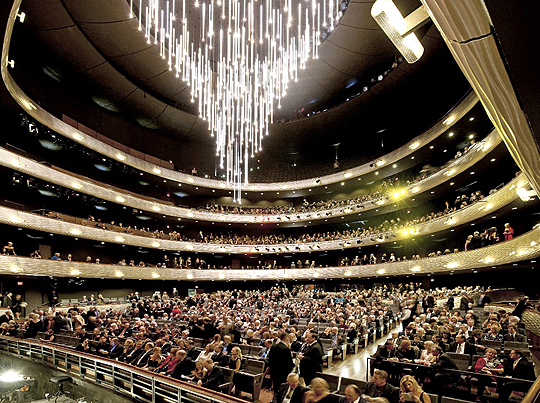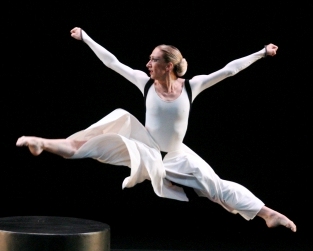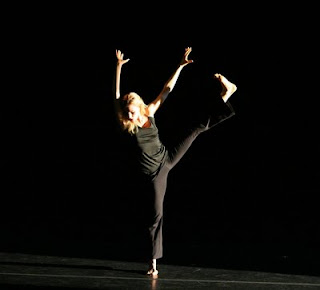Do you notice that when you get back from a great vacation your memories make that vacation seem even better because you constantly replay the good times in your head? The same is true with a great dance performance; you think about it and replay favorite parts that are forever etched in your memory. It becomes bigger and better long after it’s over. Dance is an art form that lives in your memories unlike a painting that you can see again.
Martha Graham was one of the greatest American artists; she broke the traditional mold of dance like Picasso did for art. Her work is classic, captivating, and powerful. She was a pioneer and a revolutionary in dance and her form of art is still relevant to new generations today. Her dance company is one of the oldest and most celebrated modern dance companies in the world.
The great thing about dance is that it continues to evolve and if it really speaks to you, it won’t be dated. Watching The Martha Graham Company at the Winspear last Saturday night, even knowing that many of the pieces were choreographed in the 30’s; I found that they still translate today.
The Martha Graham Company has been around for 85 years, founded in 1926. Graham worked with many famous icons: Gregory Peck, Bette Davis, Margot Fonteyn, Rudolf Nureyev, Mikhail Baryshnikov, Liza Minnelli, Kathleen Turner, Betty Ford…She opened doors and broke down a wall between classical ballet versus modern dance but also all the arts…The skill and tradition that is in classical ballet makes modern dance seem indulgent because it’s so much more self-expressive and complex; but this is what makes you think AND FEEL! Ballet can be equally as radical but it’s not as organic and liberating as modern dance.
Martha danced up into her 70’s (like Margot Fonteyn). I like the fact that Graham’s dancers are mature; this way they have a greater understanding and feeling of life because they have been seasoned enough to share the beautiful and ugly experiences that life peppered them with. Martha said, “It takes ten years to make a dancer; that’s ten years of training. It takes another ten years to find the being you are.”
Raised in California, she was strongly influenced by Native American cultures and loved New Mexico. When Graham died at 96 in 1991 her ashes were scattered in New Mexico, a place where she found her greatest inspiration. Like The Doors musician Jim Morrison and modernist painter Georgia O’Keefe, Martha Graham was inspired by the beauty and spirituality of the Southwest that naturally envelops you. She was also, like Isadora Duncan, inspired by Greek mythology. You can see both Native American movements and Greek statuesque arms in her dances; the style is powerful and feminine accentuated by the loose hair and flowing dresses that bring out her liberating style even more.
Graham’s technique is centered in the Earth, unlike classical ballet, she embraced gravity. Movements are driven from the core of the body and breath is where the power comes from. This seems more natural to us today because many people are familiar with the practice of Pilates and yoga and the focus of the core and how breath is the instigator.
The Martha Graham Dance Company has some of the most memorable costumes of any dance company. In her most famous solo piece, Lamentation, a one person performance of a woman struggling in a tube dress shows an expression of grief. The audience feels the emotion of the dancer and then possibly their own. She used her costumes to enhance her dances.
I think the fashion industry should play more into the dance world. It would be such a pleasure to see the two art forms come together more often and collaborate to inspire each other. I’m thinking of a Project Runway challenge. How cool would it be to see the choreographer inspired by a costume and vice versa?
What I enjoyed about the TITAS Martha Graham concert at the Winspear Opera House was that I didn’t feel overwhelmed by Graham’s powerful style. Sometimes you can have too much “in your face” modern that you need a refresher. I think back to when I was at the Vatican and remember that there was just so much elaborate detail in every corner that I felt like I needed to rest my eyes. But once you started walking out of the Sistine Chapel you could view some modern art in the halls to refresh your eyes.
The same is true for Martha Graham’s dance repertoire; she had some very powerful and aggressive pieces like Panorama which were very military-like. The red costumes highlighted the fierceness of the piece. Panorama was a special performance for Dallas because SMU Meadows dancers were lucky enough to perform with The Martha Graham Company. SMU made Dallas proud and I’m sure Martha too! There were also pieces like Lamentations Variations that made you think in another direction…struggle, grief, and the New York skyline. Every Graham piece has great feeling but each feeling fights a different battle.
To set the mood for the performances, dances opened with a video that explained the times (hardships of the 30’s) with narration and images to take you there. I enjoyed hearing Martha Graham’s voice as a prelude to a dance.
Having my degree in dance I have a strong background in Martha Graham’s history. Looking at the audience at the Winspear Opera House last Saturday night I couldn’t help but wonder how many people were seeing Martha Graham’s work for the first time. My friend was one of those people and she observed that the dances were heavy, powerful, and that they made you think. I’m sure Martha Graham would be happy to know her dances still have (and will always have) the power to speak, be timeless, and be relevant even to a first time viewer.
Dance is a universal language; through movement we feel, speak, and understand with no translations needed. The message doesn’t need to be the same for every viewer, but the inspiration and motivation of the dance movement is relevant and successful if it results in causing us to think, and appreciate. Martha said, The body says what words cannot” and “Dance is the hidden language of the soul of the body.” I couldn’t agree more.
Photos: The Martha Graham Dance Company Lamentation Variations, Winspear Opera House


